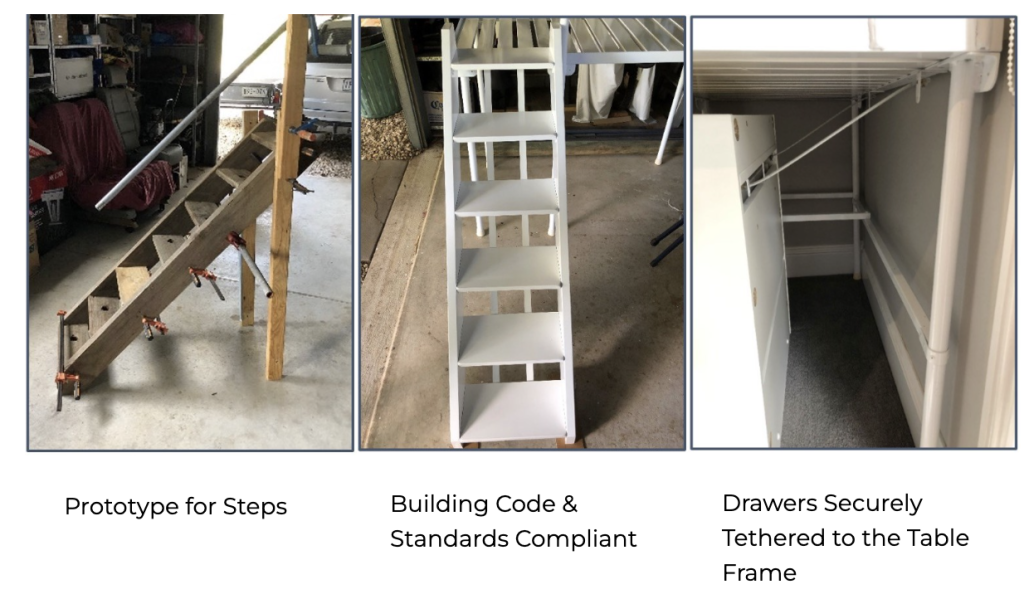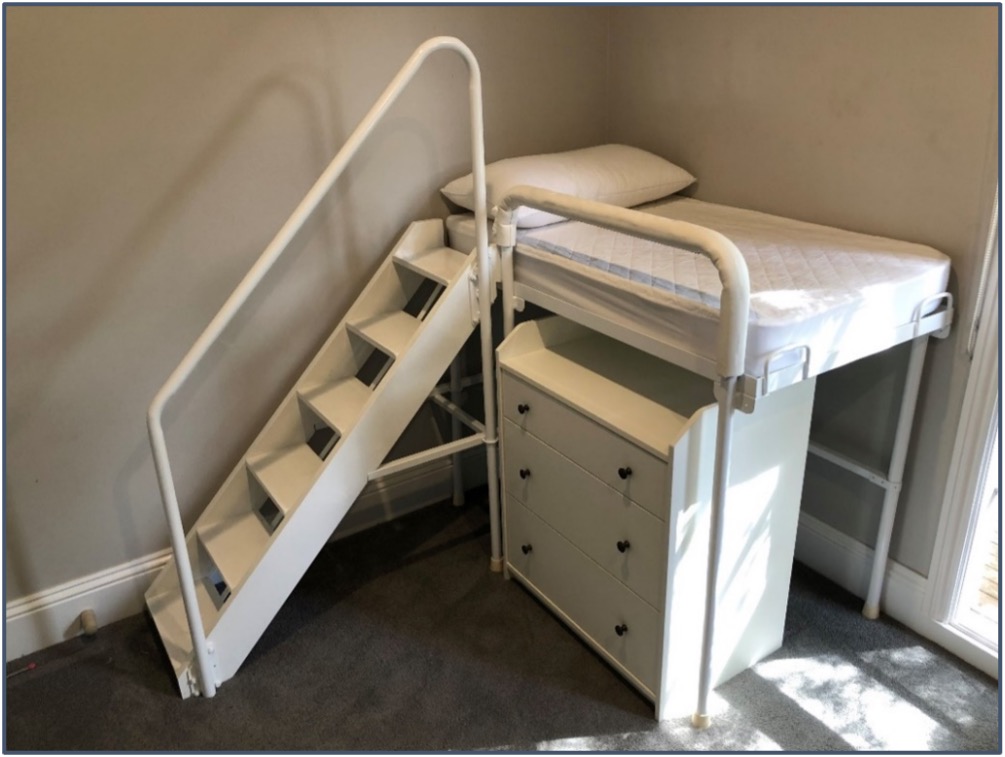Project of the month - Change Table
Today’s feature article was provided in June 2022 but is being presented today as a prelude to the Tech Talk that volunteer, Laurie King, will be providing in September/October. Laurie’s Tech Talk will involve a Change Table for another child with the same diagnosis as Flynn. You’ll be amazed at how different a solution sometimes needs to be, despite the diagnosis being the same.
Change Table for Flynn, Barwon Project
July 2021-January 2022 (Initial Visit to Project Delivery)
Our client for this project was 5-year-old Flynn, who lives with a diagnosis of spina bifida (SB). Our contact was his mother, Maddie.
SB is a congenital condition involving the pre-birth development of the spinal cord and, subsequently, the nerve supply to the lower limb muscles and the bowel and bladder. SB has a range of effects on mobility and bowel and bladder function, depending on its severity. There can be minimal or no effects to significant limitations on function. Mobility aids such as splints, crutches or a wheelchair may be required, as the toddler/child develops. Fortunately, Flynn’s level of mobility is good. He can walk independently and mount steps using a handrail for assistance. However, he still requires catheterization to empty his bladder, which Maddie performs numerous times per day. At 5 years, Flynn was rapidly outgrowing his conventional change table and was becoming quite heavy for Maddie to safely lift from floor level onto the table.
Experienced Barwon volunteer, Laurie King, quickly understood the requirements for the table. It needed to:
· Be large enough to accommodate Flynn until the approximate age of 12 when, with training, he could take responsibility for managing his own bowel and bladder function.
· Allow Flynn to independently access the table, negating the need for lifting.
· Allow access for catheter changes to be from the end of the Table.
· Be compliant with the Building Code/Australian Standards for cots and stairs. Laurie was aware that Flynn had a younger sister who might be interested in using the item for ‘play’ purposes.
· Ease the physical strain on Maddie by having a working height and work area that suited her dimensions and needs.
· Be accommodated and function well in a smallish room.
· Always be stable, when in use and not in use.
· Have a chest of drawers incorporated into the design, to hold items required for the procedure.
· Be aesthetically pleasing, easily cleaned and suit the décor of Flynn’s bedroom.
· Be built in major sub-assemblies due to restricted passageways and assembled in Flynn’s bedroom.

In alignment with our client focussed approach, Maddie was encouraged to provide her thoughts and feedback regarding the design, and throughout the build process. Laurie regularly provided Maddie with a summary of the build progress, accompanied by photos, or visit Flynn’s home if an aspect needed to be trialled.
Knowing the scope of the project, Laurie started with a concept sketch (Fig.1) which was based around a standard cot mattress at the agreed working height, with stair access.

Following client & project approval the major sub-assemblies were identified – welded angle iron table frame, stairs, handrail, support legs, bracing tubes, mattress, chest of drawers.
A prototype of the stairs (Fig. 2) was required to judge if the handrail height & steps were suitable for a growing boy while also complying with regulatory Codes & Standards (Fig. 3).

Laurie contributed 125 hours of volunteer time to complete this project. In addition, the six months from the initial volunteer visit to project delivery reflects the detail that was required for this project. As every volunteer knows, the design detail can often make the difference between an item being immensely useful to the client or being an item that is possibly tolerated but not particularly functional.
Maddie was extremely pleased with the result, so many thanks to Laurie for a great solution.
Johanne Walker
Occupational Therapist, Barwon
